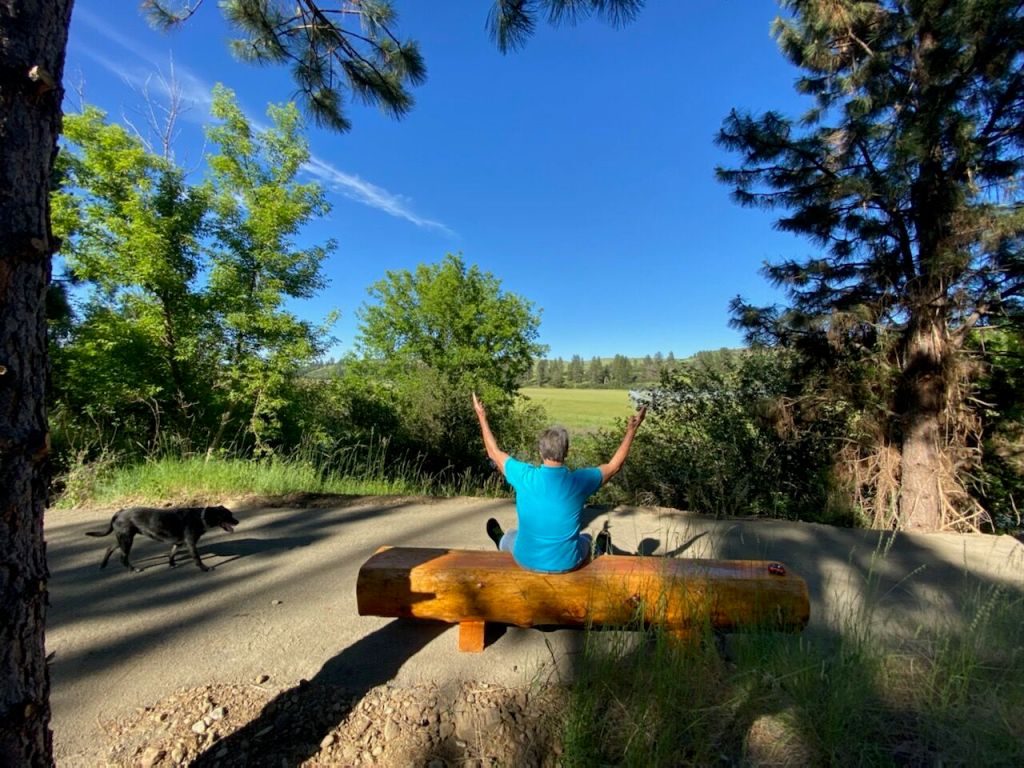Sponsored Content
Northeast Oregon Trail Links Communities, Builds Social Bonds
Published 11:06 am Wednesday, September 4, 2024
Passing under a banner reading “The Little Trail That Could,” nearly 70 people took their first steps down a pathway that organizers say represents more than just a hike through this remote and rugged landscape.
The 63-mile Joseph Branch Trail will eventually link the northeastern Oregon towns that stretch from Elgin to Joseph. Residents and community leaders were there to cut a red ribbon marking the opening of the first section of the trail. A local band played as attendees enjoyed the new “pocket park,” which features a gazebo, hitching post, picnic tables and a bike maintenance station
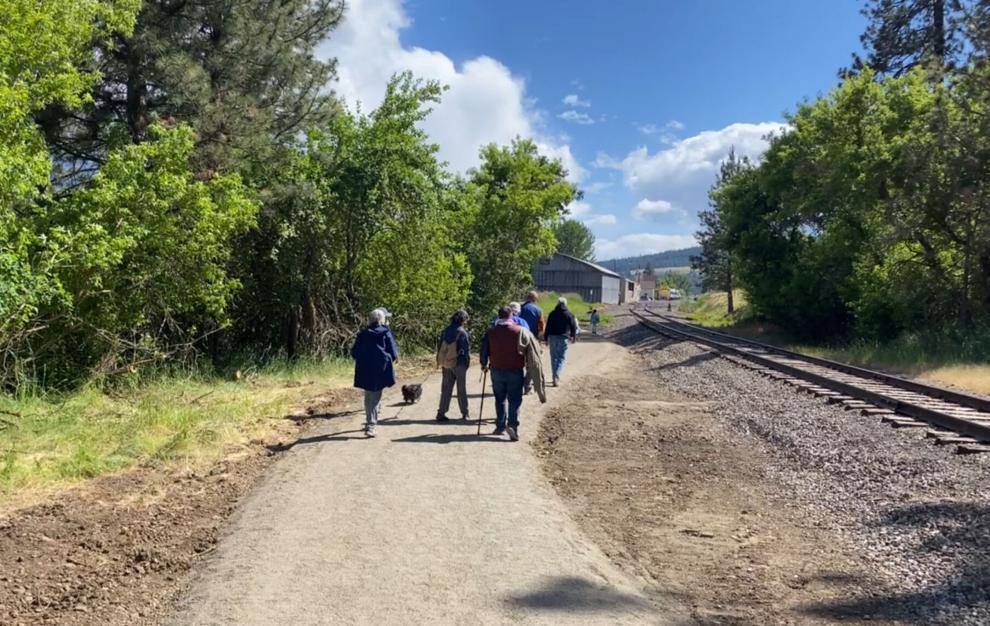
“We’re trying to provide a community asset that will improve physical and mental health,” says Gregg Kleiner, project coordinator for the Joseph Branch Trail Consortium (JBTC). The nonprofit is developing the path to welcome walkers, cyclists and horseback riders. They hope the trail will improve some of the social issues facing eastern Oregon communities: loneliness, poor physical health and a lack of easy access to nature.
The project has raised more than $800,000 in grants, including operational support from Oregon Community Foundation. Kleiner says those ongoing costs are difficult to fund since many grants target the costs of planning or construction.

“That’s the great thing about Oregon Community Foundation: The grants we’ve gotten from them are to help us pay the bills day to day,” Kleiner says. “They’re a great organization, and they do so much to help various communities in the state of Oregon. We feel honored that they’re enthusiastic about this.”
More Than a Trail
Despite the abundance of nature in eastern Oregon, staying physically fit can be a challenge for some residents. Gyms are scarce. Hiking can be steep and mountainous. Getting to trailheads usually requires a vehicle. Additionally, rural communities often struggle with social isolation. In 2023, “nearly half (48%) of Oregonians reported feeling left out of or disconnected from their community,” and “less than half of Oregonians (43%) said they have ‘places to sit and chat in their neighborhoods.’” That’s according to the 2024 Tracking Oregon’s Progress report by Oregon Community Foundation.
Trail coordinator Gregg Kleiner grew up in rural Oregon and spent lots of time outdoors, backpacking and camping. He’s passionate about giving others that same connection with nature. “As people connect with the outdoors, set down their devices, the research shows there’s a big impact on mental health,” he told me. Kleiner is also optimistic about how the trail will help people form deeper connections with their communities.
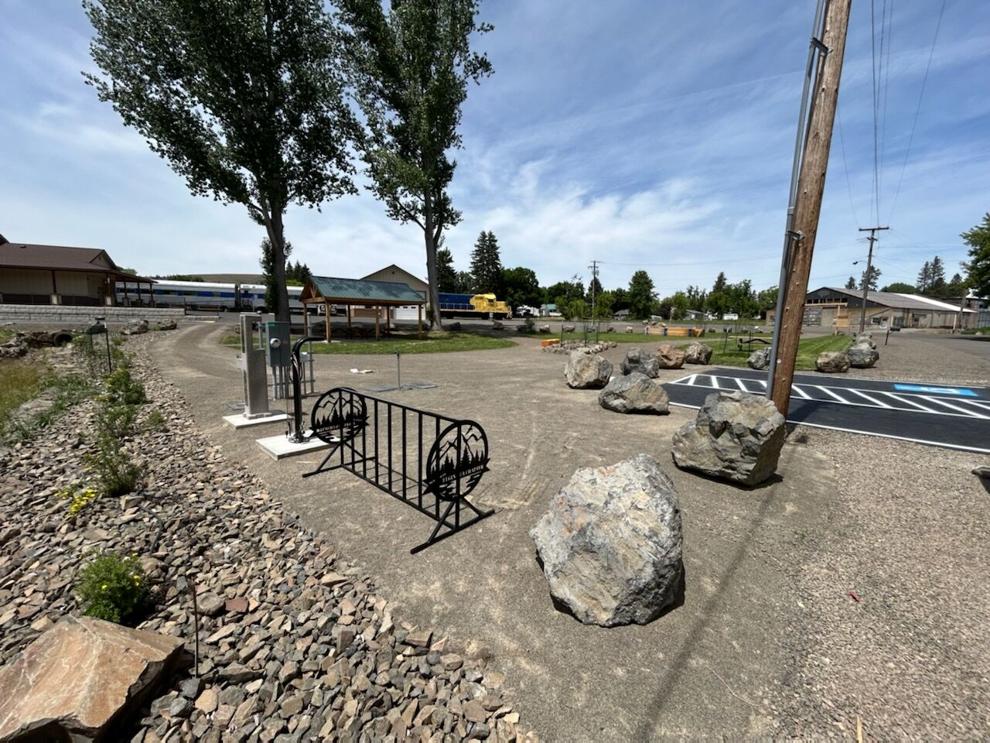
These connections are increasingly crucial given the growing recognition of a “loneliness epidemic” in the U.S. Loneliness can have physical consequences, like increased anxiety, depression, stroke, heart disease, and dementia. “The difference between a very connected person and one who is isolated long-term is the same as that between a nonsmoker and someone who smokes 15 cigarettes a day,” says U.S. Surgeon General Vivek Murthy.
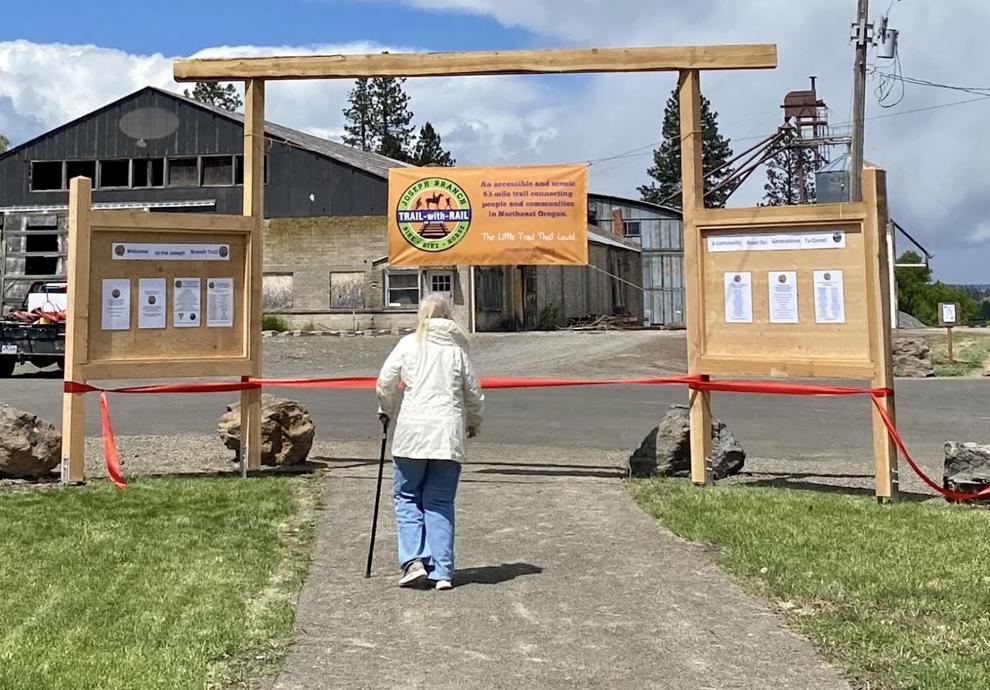
It can be difficult to meet social needs in rural areas, but public gathering spaces like libraries, pools, playgrounds, or community centers can help. For example, when the pastor at the Joseph Methodist Church started a weekly community dinner this winter, people came out in droves. “Suddenly the place is packed,” says Kleiner. “Not just with people who don’t have enough to eat… a lot of people are coming just to hang out and talk to people.” JBTC hopes the trail will become one of these community gathering spaces, where everyone from the local school’s cross-country running team to newly settled retirees can connect with friends.
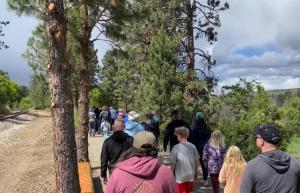
The trail also offers the community the health benefits of spending time in nature. According to the U.S. Department of Agriculture, “people who live near parks and green spaces have less mental distress, are more physically active, and have longer life spans.” Outdoor activities also keep the state’s healthcare costs low: a 2018 study estimated that Oregonians’ participation in outdoor recreation activities saves the state $1.4 billion annually.
Hike Through History
The trail’s history starts with the Wallowa Union Railroad, built in the late 1800s and retired in the 1990s. The railroad was acquired by the Wallowa Union Railroad Authority (WURA) in 2002, and repurposed with two recreational uses: the Eagle Cap Excursion Train, and the Joseph Branch Railriders’ rail bikes. JBTC first proposed the concept for a trail running alongside the tracks in 2013.
JBTC plans to situate trailheads directly in towns. That way, access to nature will be possible even for those who can’t drive to a trailhead or do a strenuous hike. The trail will also encourage bicycling, providing a cycling route free from vehicle traffic on Highway 82.
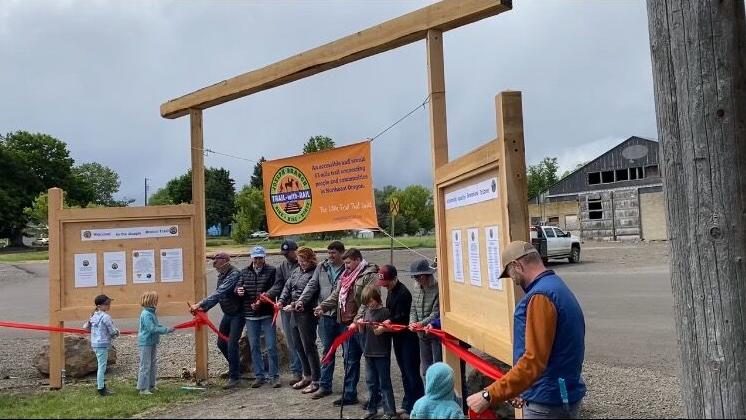
The trail’s design—flat, hard-packed terrain—also aims to increase accessibility. Sections of trail near towns will be ADA-compliant—4 to 8 feet wide, on hard-packed gravel that wheelchairs or strollers can use. This accessibility is particularly important in eastern Oregon towns that are popular with retirees. Wallowa County, where much of the trail will be, has the third-oldest population out of all of Oregon’s counties. Fifty-four percent of the county’s population is over 50.
The trail is being shaped by input from local communities, which JBTC gathers from public surveys, public planning meetings, walking tours, and other events. They even interviewed students in Elgin. “We went to the schools and asked, ‘What do you want to see at the trailhead?’” says Kleiner.
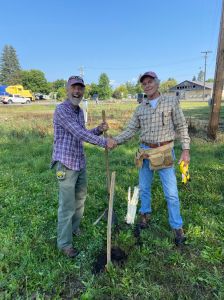
The students requested a gaga ball court, which is now installed at the Elgin pocket park. Local input also includes Native American populations, particularly the Nez Perce tribe, who offered part of their land for the Wallowa trailhead. The trail will also connect to the Nez Perce National Historic Trail, allowing visitors to understand the region’s cultural heritage.
With any project so ambitious—the trail will cover 63 miles and cross seven towns—resistance is inevitable. In this case, adjacent landowners are concerned about trespassing, loose dogs, littering, and loss of privacy. JBTC listens to these concerns, most recently at a July town hall meeting in Elgin that drew a standing-room-only crowd. JBTC has a plan to address the concerns, too: the trail will require leashes for dogs, provide bathroom facilities, and offer litter control. They also work directly with landowners to address specific needs, such as installing fences and ensuring cattle have appropriate crossings where necessary. “We’ve really done the homework,” Kleiner says. “Because at the end of the day, we want this trail to work for everyone.”
Studies show that many adjacent landowners ultimately end up seeing the trail as beneficial in terms of health, social impact, and property value. “It’s incredible once these things go in, kids can ride to school without being on a busy highway, real estate values start to go up,” Kleiner says. Once a trail is incorporated into a community, there’s a positive effect on crime rates and property values.
JBTC has designed the trail to help boost local economies, especially in towns that tourists often drive through without stopping en route to Joseph, like Wallowa, Minam, Lostine, and Enterprise. Through building out the pocket parks with gazebos, hitching posts, benches, and bicycle maintenance stations, Kleiner hopes that visitors will stop, “charge their EV, walk out on the trail a few miles, come back, and spend money at the local restaurants and stores.”

Looking ahead, the JBTC plans to build a trailhead and trail section in Wallowa, though progress has been delayed by a lack of support from WURA. The lengthy development process is worth it, Kleiner says, because once it’s built, it will be a community asset that will last for generations. “The grandkids of some of the people today will be using this,” Kleiner says. “It’s just inspiring for me to try to be creating something that would have that long-term impact.”


